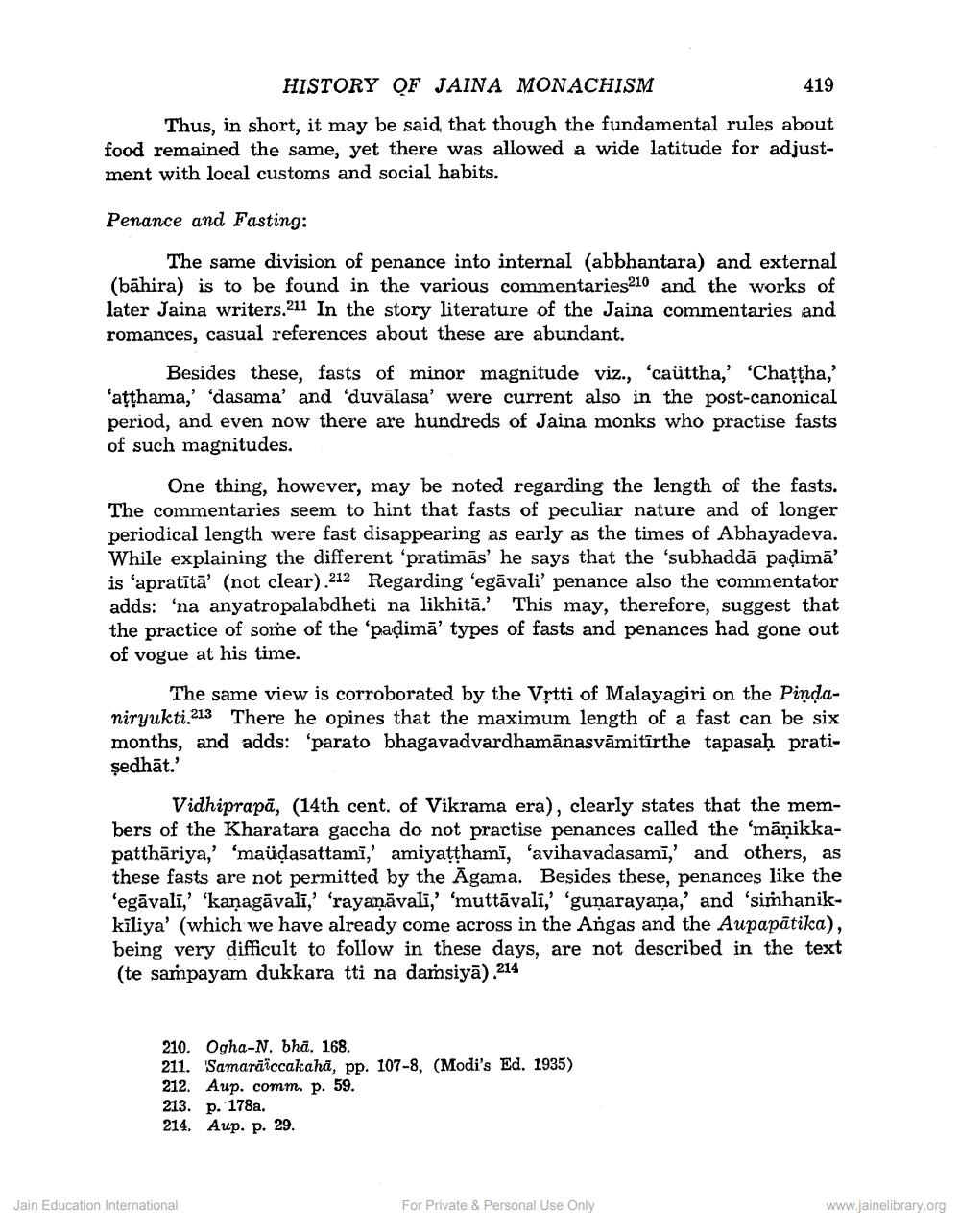________________
HISTORY OF JAINA MONACHISM
419
Thus, in short, it may be said that though the fundamental rules about food remained the same, yet there was allowed a wide latitude for adjustment with local customs and social habits.
Penance and Fasting:
The same division of penance into internal (abbhantara) and external (bahira) is to be found in the various commentaries210 and the works of later Jaina writers.211 In the story literature of the Jaina commentaries and romances, casual references about these are abundant.
Besides these, fasts of minor magnitude viz., 'caüttha,' 'Chattha,' 'atthama,' 'dasama' and 'duvālasa' were current also in the post-canonical period, and even now there are hundreds of Jaina monks who practise fasts of such magnitudes.
One thing, however, may be noted regarding the length of the fasts. The commentaries seem to hint that fasts of peculiar nature and of longer periodical length were fast disappearing as early as the times of Abhayadeva. While explaining the different 'pratimas' he says that the 'subhaddā paḍimā' is 'apratītā' (not clear).212 Regarding 'egavali' penance also the commentator adds: 'na anyatropalabdheti na likhita.' This may, therefore, suggest that the practice of some of the 'padima' types of fasts and penances had gone out of vogue at his time.
The same view is corroborated by the Vṛtti of Malayagiri on the Pindaniryukti.213 There he opines that the maximum length of a fast can be six months, and adds: 'parato bhagavadvardhamānasvāmitirthe tapasaḥ pratişedhāt.'
Vidhiprapa, (14th cent. of Vikrama era), clearly states that the members of the Kharatara gaccha do not practise penances called the 'māņikkapatthāriya,' 'maüḍasattami,' amiyaṭṭhami, 'avihavadasami,' and others, as these fasts are not permitted by the Agama. Besides these, penances like the 'egāvali,' 'kanagavali,' 'rayaṇāvali,' 'muttävali,' 'gunarayana,' and 'simhanikkiliya' (which we have already come across in the Angas and the Aupapātika), being very difficult to follow in these days, are not described in the text (te sampayam dukkara tti na damsiya),214
210. Ogha-N. bhā. 168.
211. Samaraiccakaha, pp. 107-8, (Modi's Ed. 1935)
212. Aup. comm. p. 59.
213. p. 178a.
214. Aup. p. 29.
Jain Education International
For Private & Personal Use Only
www.jainelibrary.org




